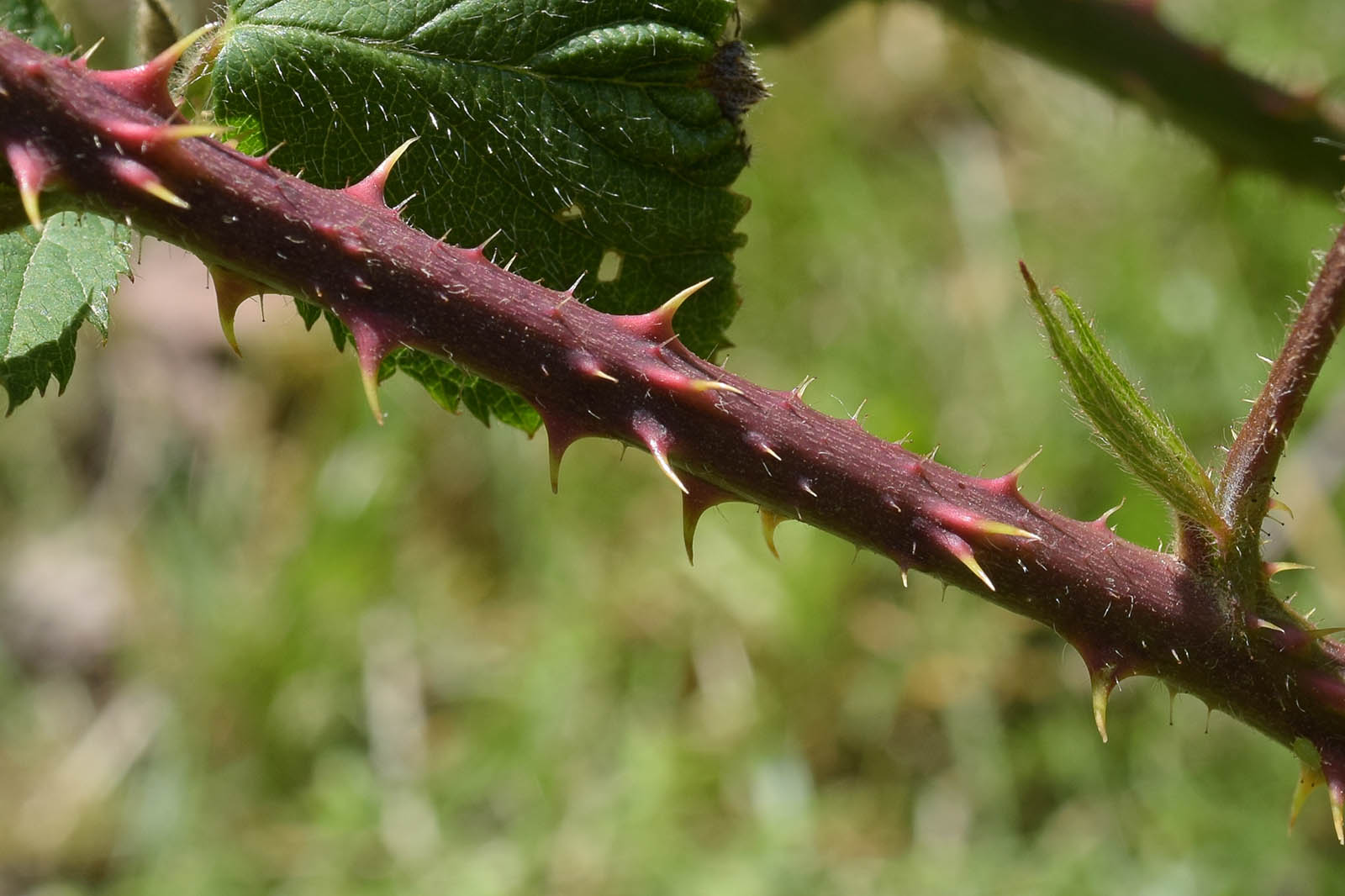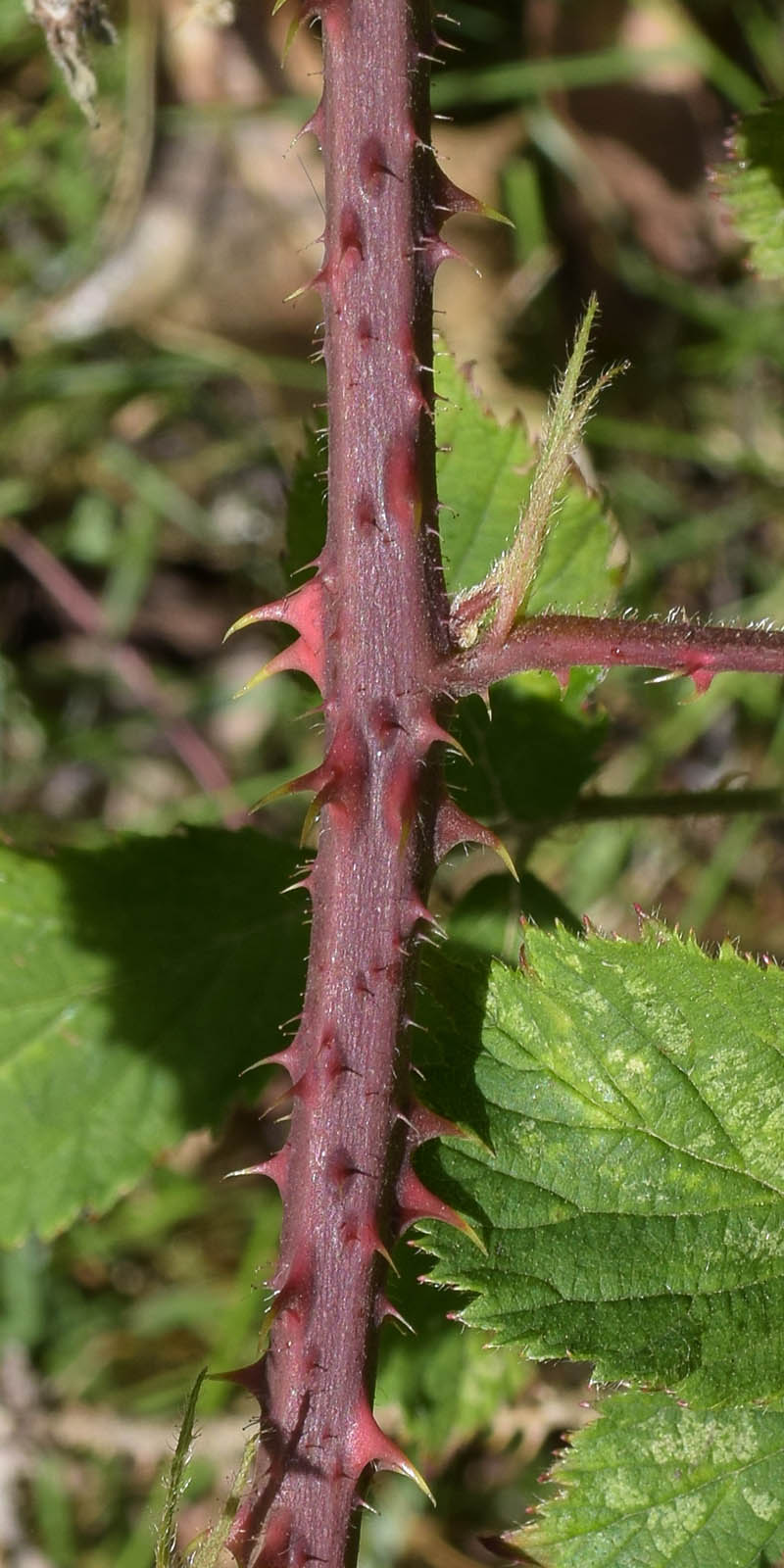
Rubus hantonensis – Series Micantes
back to Alphabetical index · Taxonomic index
This bramble was named after his home county of Hampshire by batologist David Allen in 1985. He wrote It can be told at once by its low stature, very long lower panicle branches, cuneate panicle leaflets, finely toothed and disproportionately long-acuminate stem leaflets and small, distant, narrow white petals.
Its distribution is centred on the New Forest, but it extends as far as the Surrey border in NE Hants and there are a few localities on the Isle of Wight.

These photos show that the flowers at the top of the panicle are clustered into a fairly compact umbel. They are much smaller than most other brambles, being about 1.5-2cm across with petals only about 8mm long, which are narrowly obovate and very widely spaced. The stamens just exceed the height of the styles.

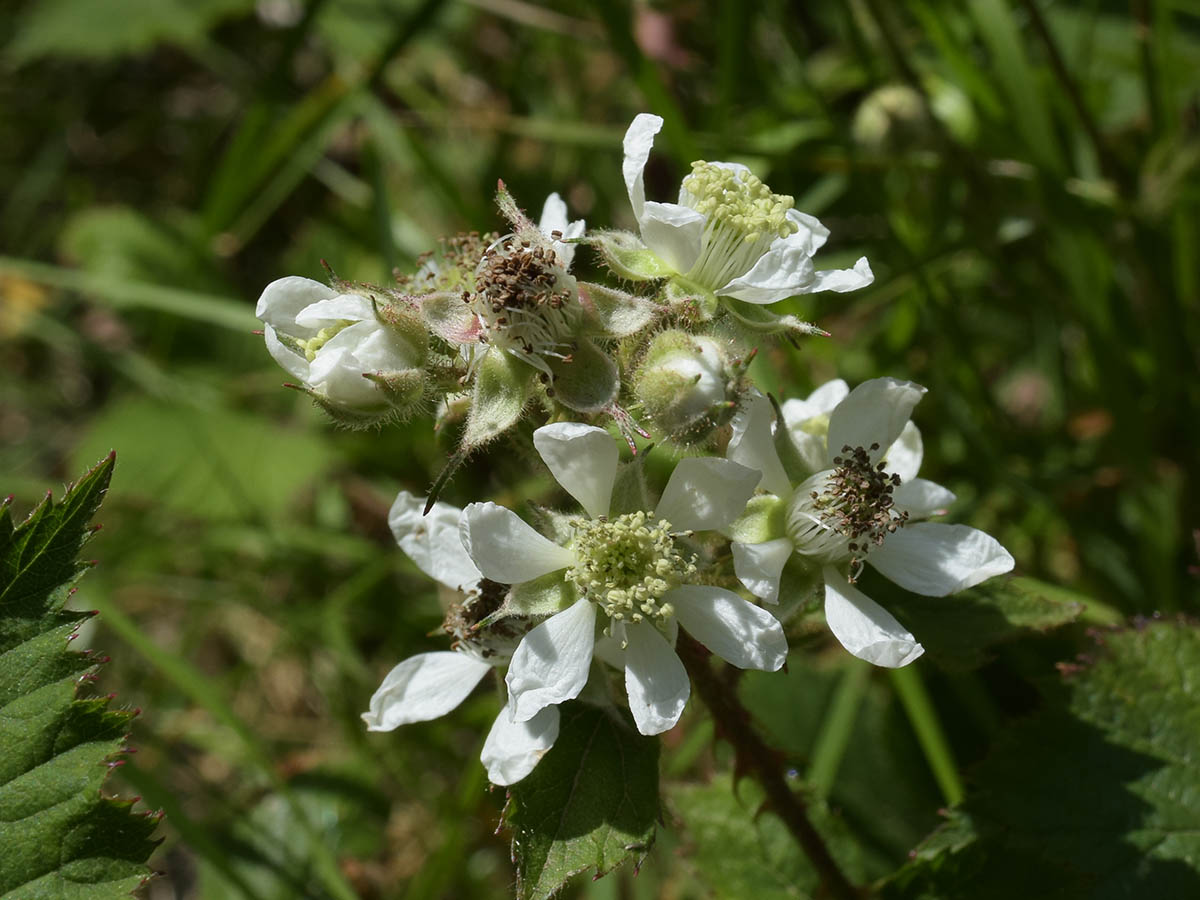
The petals appear slightly creamy white from a distance due to the pale yellowish bases and greenish veins. Note also the patent, long-tipped sepals which are almost completely visible between the petals, giving the flowers a distinctive appearance.
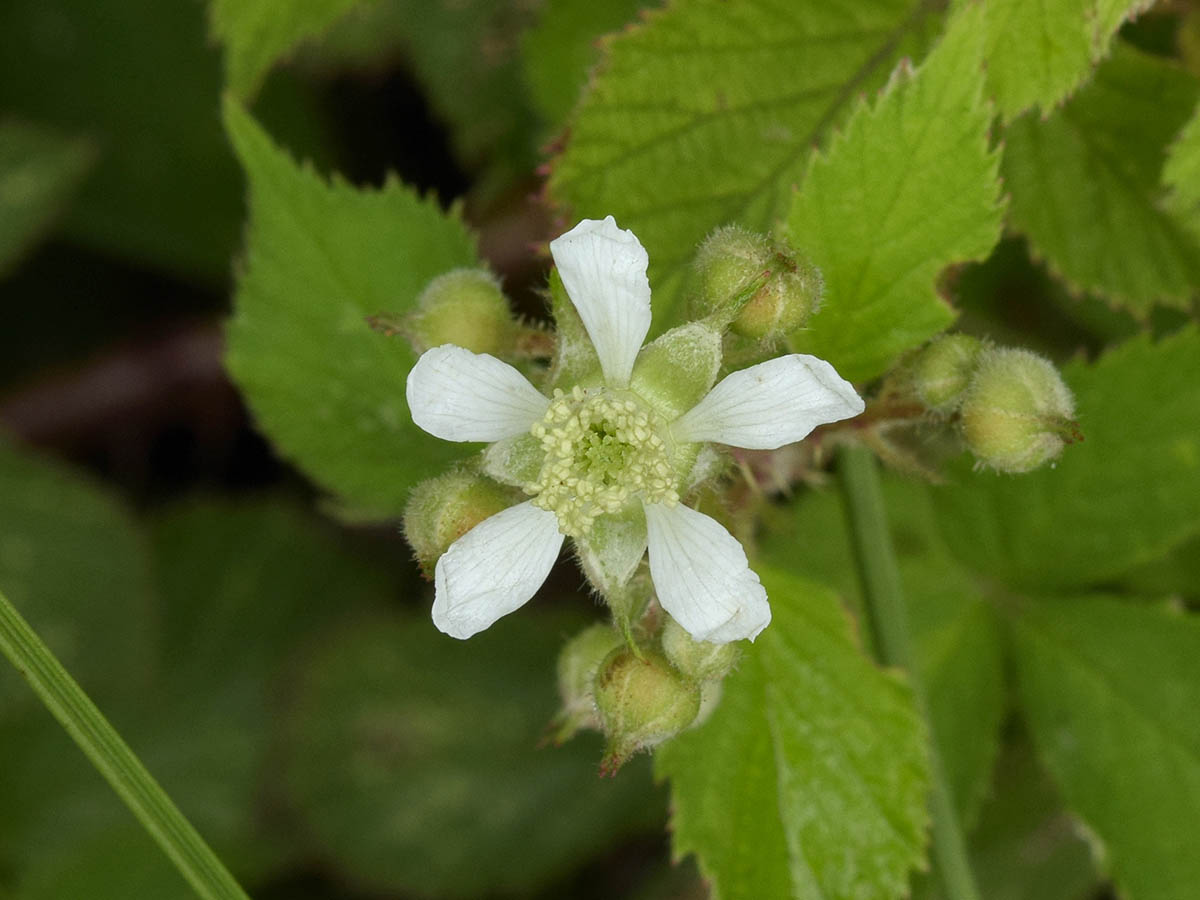

The insides of the sepals turn red and the tips curl up as the fruits starts to develop.
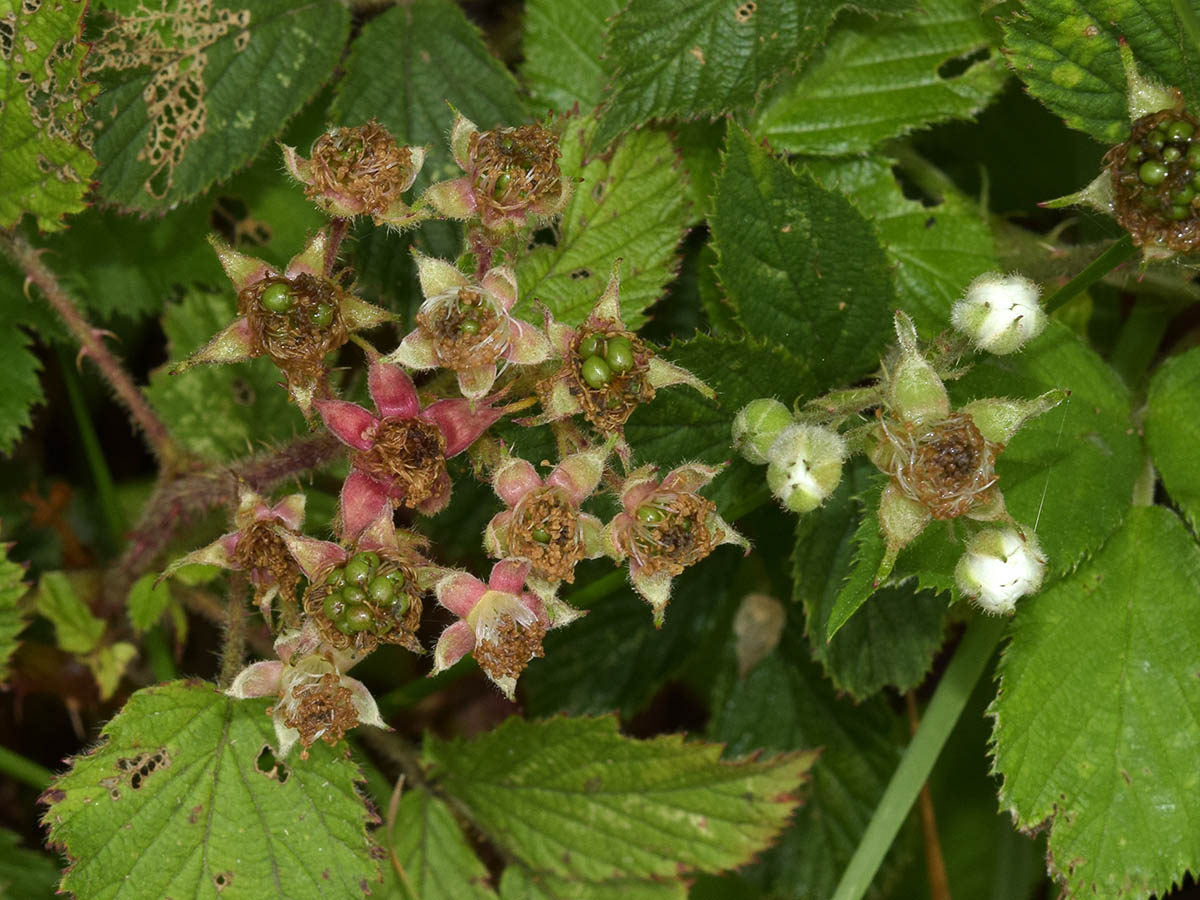
Leaves are relative small with 5 (occasionally 3), deeply and sharply toothed leaflets which are contiguous to slightly imbricate. The undulate margins to the leaflets accentuate the toothing. This is one species that can be instantly identified by the leaves when encountered in the New Forest, though they are somewhat similar to those of R. pistoris. The terminal leaflet is about 5-7 x 3.5-6cm, broadly obovate to almost round with the distinctive proportionately long acuminate apex, as noted above.




Leaflets are glabrescent to sparsely hairy above and softly downy below.

The stem is bluntly angled, dark reddish-purple in colour with numerous strong, declining, curved or falcate (hooked) prickles on the angles, which have bright reddish bases and yellow points. They may be sparsely hairy or glabrescent and have scattered to frequent long-stalked glands and non-glandular pricklets.
